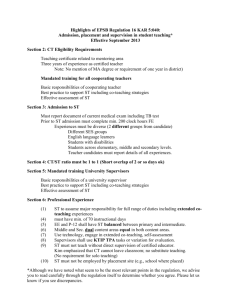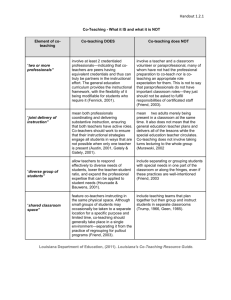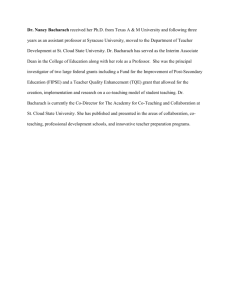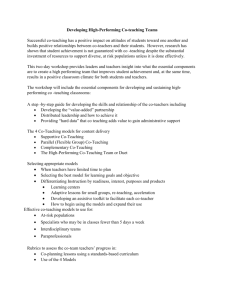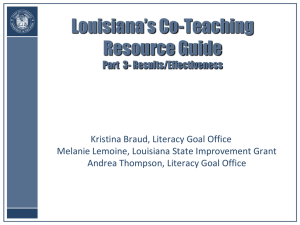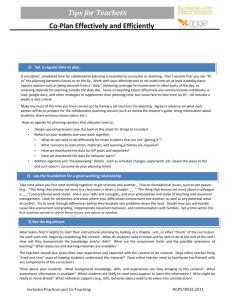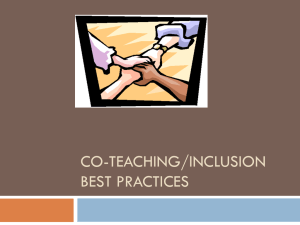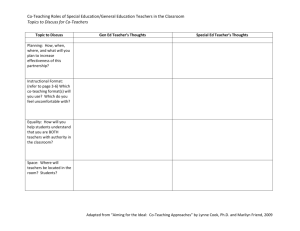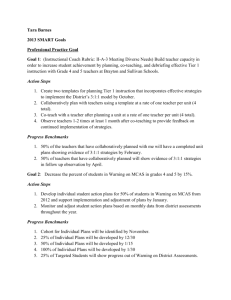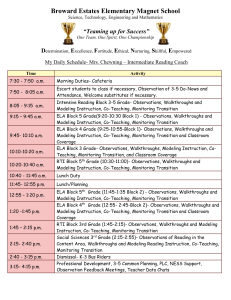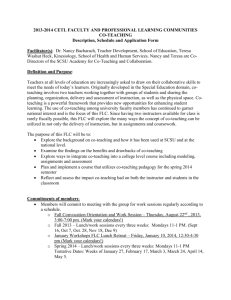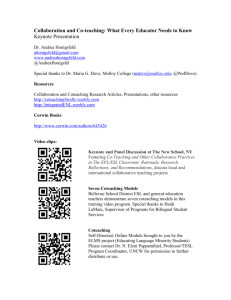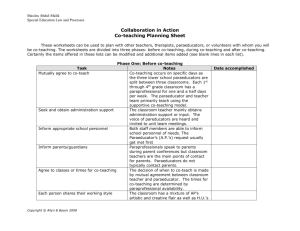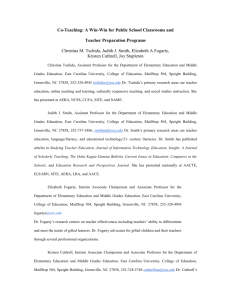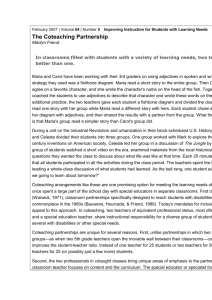lcwiki4 - EarlyActionResearch
advertisement
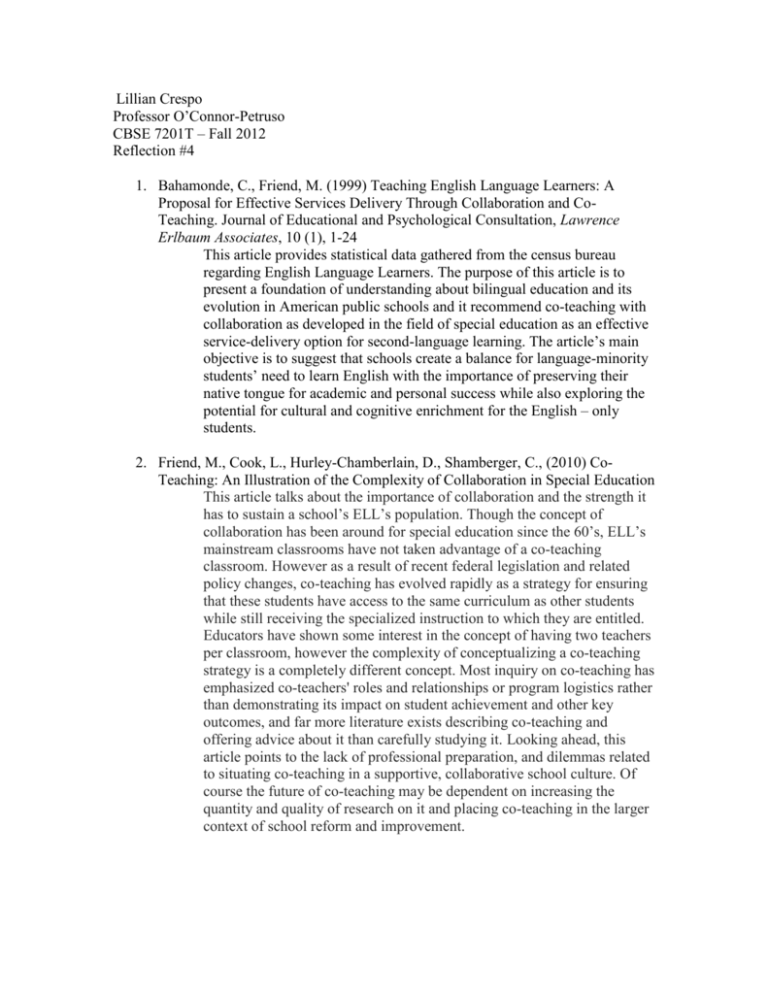
Lillian Crespo Professor O’Connor-Petruso CBSE 7201T – Fall 2012 Reflection #4 1. Bahamonde, C., Friend, M. (1999) Teaching English Language Learners: A Proposal for Effective Services Delivery Through Collaboration and CoTeaching. Journal of Educational and Psychological Consultation, Lawrence Erlbaum Associates, 10 (1), 1-24 This article provides statistical data gathered from the census bureau regarding English Language Learners. The purpose of this article is to present a foundation of understanding about bilingual education and its evolution in American public schools and it recommend co-teaching with collaboration as developed in the field of special education as an effective service-delivery option for second-language learning. The article’s main objective is to suggest that schools create a balance for language-minority students’ need to learn English with the importance of preserving their native tongue for academic and personal success while also exploring the potential for cultural and cognitive enrichment for the English – only students. 2. Friend, M., Cook, L., Hurley-Chamberlain, D., Shamberger, C., (2010) CoTeaching: An Illustration of the Complexity of Collaboration in Special Education This article talks about the importance of collaboration and the strength it has to sustain a school’s ELL’s population. Though the concept of collaboration has been around for special education since the 60’s, ELL’s mainstream classrooms have not taken advantage of a co-teaching classroom. However as a result of recent federal legislation and related policy changes, co-teaching has evolved rapidly as a strategy for ensuring that these students have access to the same curriculum as other students while still receiving the specialized instruction to which they are entitled. Educators have shown some interest in the concept of having two teachers per classroom, however the complexity of conceptualizing a co-teaching strategy is a completely different concept. Most inquiry on co-teaching has emphasized co-teachers' roles and relationships or program logistics rather than demonstrating its impact on student achievement and other key outcomes, and far more literature exists describing co-teaching and offering advice about it than carefully studying it. Looking ahead, this article points to the lack of professional preparation, and dilemmas related to situating co-teaching in a supportive, collaborative school culture. Of course the future of co-teaching may be dependent on increasing the quantity and quality of research on it and placing co-teaching in the larger context of school reform and improvement. 3. Murawski, W., Hughes, C. (2009) Response to Intervention, Collaboration, and Co-Teaching: A Logical Combination for Successful System Change. Preventing School Failure. Heldref Publications, 53 (0), 1-8 This article talks about RTI which is now the new response to ELL’s and Special Education reform. Response to intervention (RTI) is new method of identifying students with learning disabilities. RTI’s increasing implementation affects all teachers and students, in both general and special education. The authors point out the need for strong collaboration within schools nation wide. RTI proposes to weed out 4. Honigsfeld, A., Dove, M. (2008) Co-teaching in the ESL Classroom. Delta Kappa Gamma Bulletin, 8-14 This article explores the transferability of co-teaching models and techniques from the field of Special Education to that of Teaching English to Speakers of Other Language (TESOL). They review five possible coteaching configurations and offer suggestions on avoiding potential pitfalls. They conclude that co-teaching can (a) become an effective support for inclusive practices to accommodate the needs of diverse ELL’s; (b) help all students meet national, state and local standards; (c) establish an vehicle for creative collaboration between English as a Second Language (ESL) and mainstream teachers.
